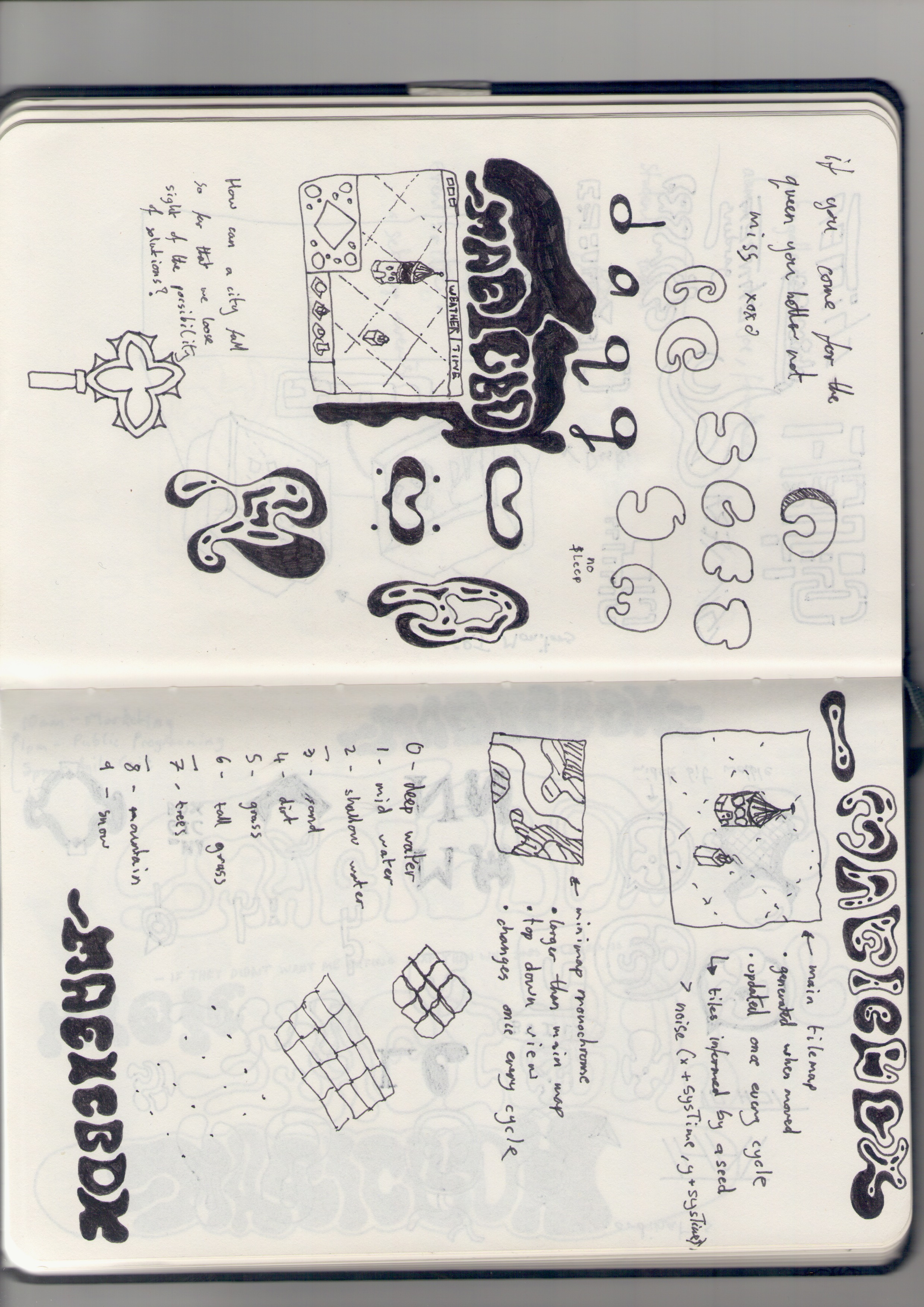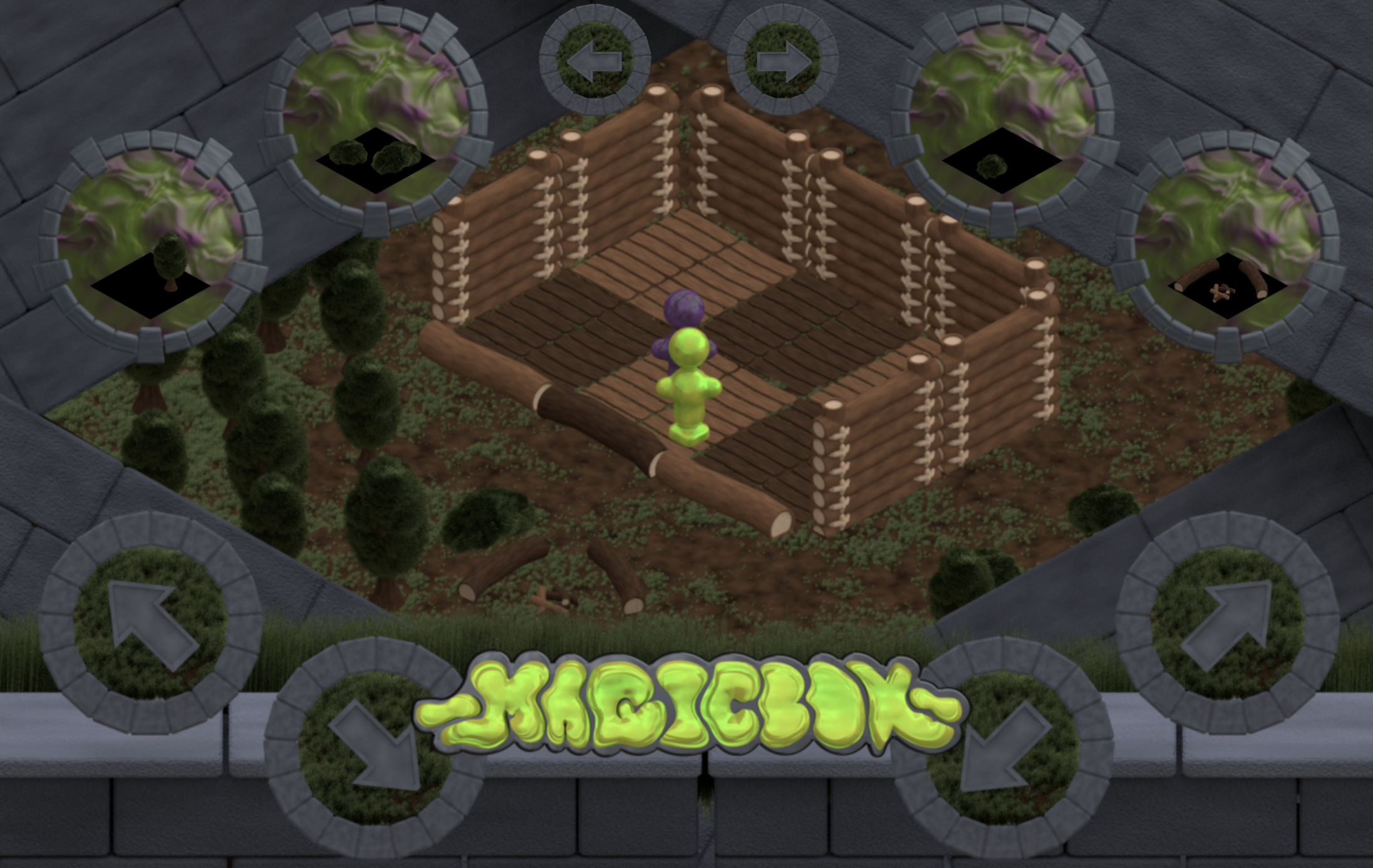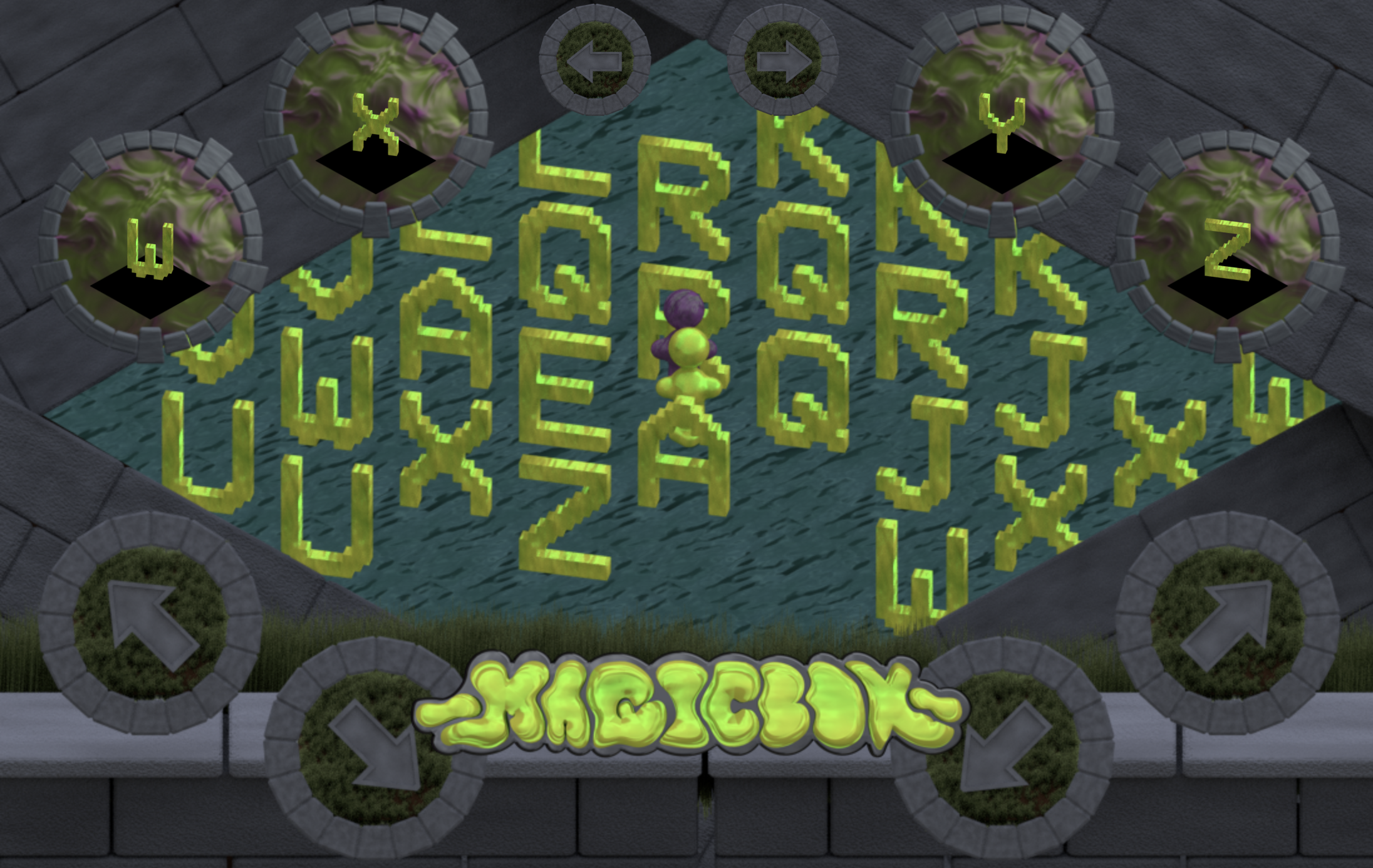

_MAGICBOX_
[ Developed by Keir Clyne ]
_MAGICBOX_ is an interactive, online, multi-user virtual world where participants are asked to engage in choreographic worldbuilding within a space undergoing constant aesthetic fluctuations.
Introduction
When I think back to my childhood, I see elves and castles. Me and my older brother walking around decrepit graveyards and burning cities. Fishing great creatures from cold black mountaintop lakes before running from giant beetles in arid deserts which went on for as far as the render distance would let me see.
Growing up, I thrived inside of Virtual Worlds. From World of Warcraft to Age of Empires, my youthful minid roamed these spaces as an escape from the mundanity (and often hostility) of british suburbia. They were a space which gave me and others a sense of agency in a world which often limits us. Both as participants within a restrictive capitalist culture or a minority in a world against the creative flourishing of our true potentials.
Because of this, I wanted to make a virtual world all of my own. One which told the story of who I was as a child and who I’ve grown to be. A queer recontextualisation of past hetronormative childhood gaming experiences. A magicbox in which we can exist within.

Concept & Background Research
Virtual worlds are not new.
The idea of a world or “reality” beside our own (yet of our own creation) is deeply rooted in human society both from a religious standpoint (e.g the afterlife) and a scientific standpoint (eg. multiverse theory). Even the word “virtual” has deep roots in language, coming from the latin virtus meaning (in layman’s terms) something which is almost real but not quite real. Because of this, we see that “Virtual Reality” just means “Pretty much reality”. It’s a performative idea in which someone will create something which simulates reality to a high enough effort that people will accept it as something akin to our own reality, of meatspace.
Although Virtual Reality has been co-opted by the electronics movement of the 21st Century (to the point that most people assume “virtual” means “electronically rendered”) there are non-electronic examples of Virtual Reality. For instance painting is a form of Virtual Reality, with paints being used as a tool to simulate reality.
This idea of painting as a tool to simulate reality was used by the Victorians where they would build large structures and paint the inside like a landscape, allowing audience members to walk around believing they were in a new constructed space. This was one of the first forms of embodied virtual realities, where instead of just being able to look at a constructed reality, you could actually be inside one.
But in time, with the aforementioned electronics movement, we created new tools in order to simulate realities. Starting with the text based virtual worlds of MUD by Richard Bartle and then continuing to graphical virtual worlds like World of Warcraft, Second Life and Minecraft. These electronic methods of creating worlds were more unique than painting because they allowed interaction with these realities (using input tools such as a mouse or keyboard).
This was further accelerated by the development of specialist tools like the Virtual Reality Headset pioneered by artists and theorists such as Jaron Lanier (who in his book “Dawn of a new everything” even described the painting “The Garden of Earthly Delights” by Hieronymus Bosch as inspiration for his research into Virtual Reality, just as a full circle moment back to painting) which allowed users to both be embodied and interact with these Virtual worlds in ways people has never been able to do before.
So then we get to now. You can probably tell by now that I love Virtual Worlds and as such I wanted to make my own, but through the lens of a queer retelling of these childhood virtual worlds / games.
My concept was to create a webapp where users would be able to enter a multi-user virtual world which looked somewhat like a retro video game (eg. Age of Empires). Once users were in the virtual world they would be able to build structures and build over the structures left behind by past users. And over time the aesthetics of the world would change from one style to another but with the underlying structures staying the same.
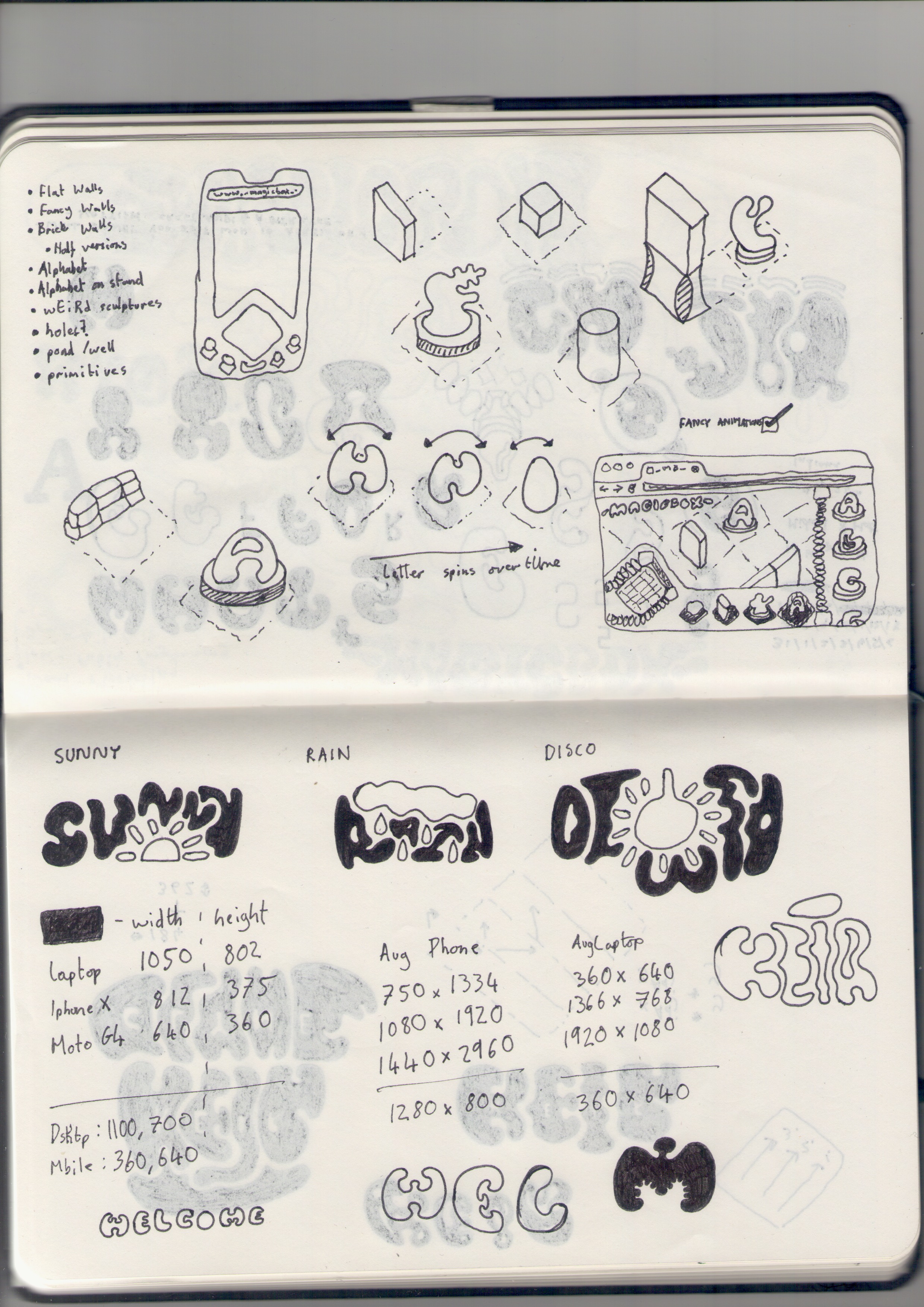
Technical - Software
The core of _MAGICBOX_ is a p5.js sketch. I decided to use p5.js because I already have some prior knowledge and it would also be more lightweight and give me more freedom than other graphics frameworks such as Unity or Three.js.
Although P5.js is used mostly for interactive websites and generative artworks, I decided it would be a good framework to construct a minimal game engine with. This game engine was informed by traditional ways of making video games (like Age of Empires) where isometric sprites are rendered in a 3D modelling software as an image which is then placed in a way within the game engine to give the illusion of depth without having to render objects in engine (which is very processing intensive). This allowed me to have higher detail sprites without losing processing power.
The sprites were all custom made and constructed using Blender with the textures themselves being generative and mimicking retro pre-rendered sprite aesthetics.
The P5.js sketch was then hosted online using Glitch. This allowed me to create a node.js server which would communicate with a users p5.js sketch using sockets.io and express. This allows users to affect changes within the world and pass these changes to other users.
One of the main dynamics of the world was the aesthetic changes. Overall there were three tilesets used being Woodland, City and Letters, each with 26 objects. Each sprite in these tilesets would be assigned a number from 1-26 meaning that if a user placed a wall down, no matter how many aesthetic changes there were when it cycled back to the original one it would still be a wall.
Originally I had planned for this project to be desktop only and to be displayed using an interactive terminal within the final show. Unfortunately due to COVID-19 I had to get rid of the interactive terminal and instead make both a desktop and mobile version of the webapp. This allowed users to access the sketch on their phone and also on their computers at home.
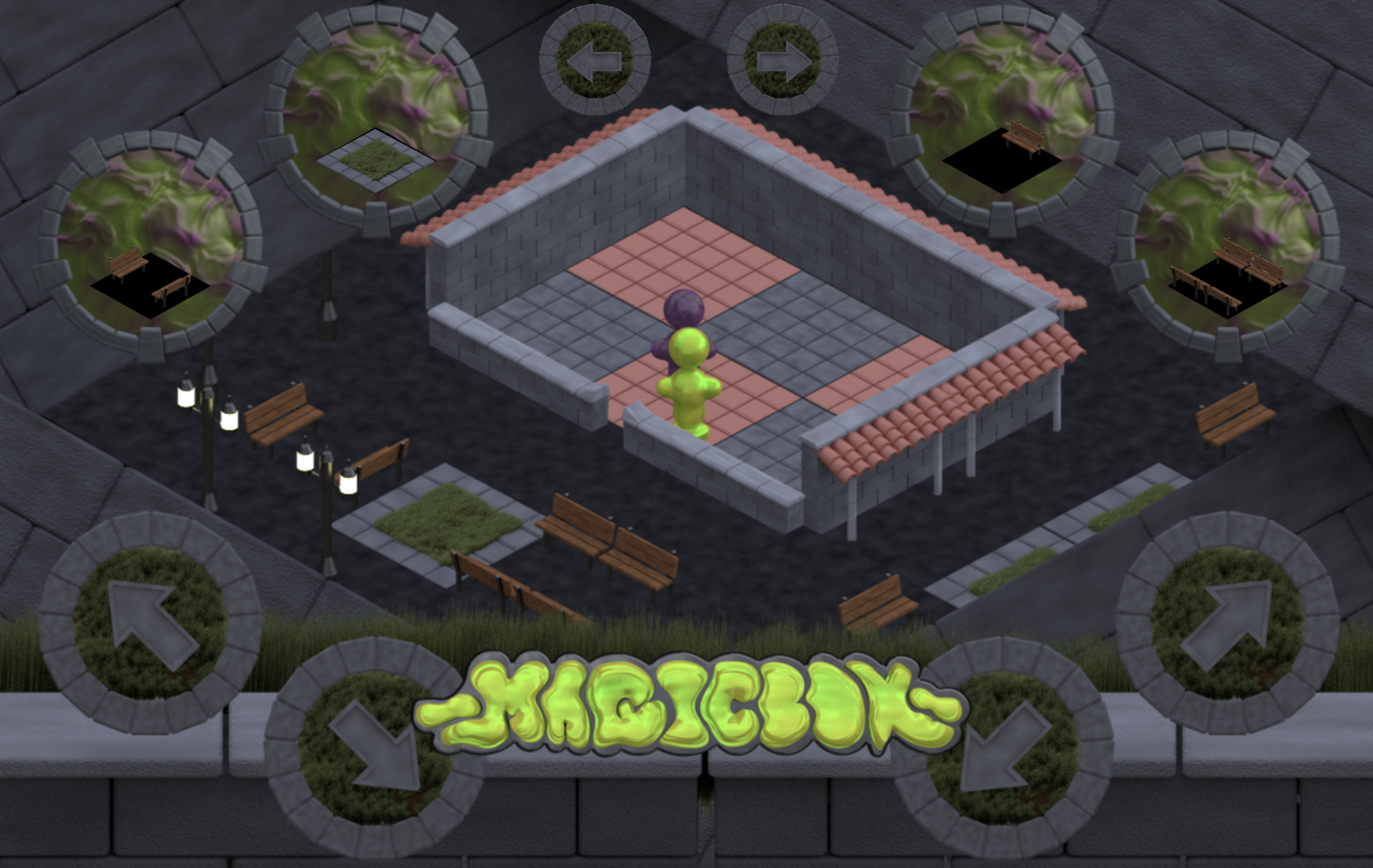
Technical - Installation
The installation itself consisted of two pieces:
The first was a CRT monitor running _MAGICBOX_ which was used because I wanted to emulate the retro gaming experience I had as a child. Due to the low resolution and the way each pixel is lit, it transformed the work almost fooling people into thinking it was actually an old video game. The CRT was also used as a way for users to view the work without actively interacting with it as well as a way to remind users that the world was open to many users (as any changes you made within the world would change on the CRT).
The second was a 12 foot neon medieval style banner with a QR code on it which, when scanned using a phone camera app, took users to the _MAGICBOX_ page. This banner was designed so it would be the first thing people saw in the installation, with its bright neon colors and fantasy medievil design following the queer retelling trend I had set from the start of this project.
Future Developments and Self Evaluation
Even though I am very happy with how the project went, I believe this is more of a proof of concept than a fully realised work. Continuing on with this project I want to add more features such as allowing users to create more complex and interactive structures as well as a chat function. I also want to start a new project which researches how virtual worlds can be used to explore intimacy and meaningful connection between users.
References
Bakioğlu, B., 2012. Negotiating governance in virtual worlds: grief play, hacktivism, and LeakOps inSecond Life®. New Review of Hypermedia and Multimedia, 18(4), pp.237-259.
Bartle, R. 2006. View Of Why Governments Aren't Gods And Gods Aren't Governments | First Monday. [online] Available at: <https://firstmonday.org/ojs/index.php/fm/article/view/1612/1527> [Accessed 19 May 2020].
Bartle, R. 2003. Designing Virtual Worlds. 1st ed. Berkeley: New Riders Publishing, pp.3-4
De Zwart, M., 2009. Piracy vs Control: Various Models of Virtual World Governance and their impact on Player Experience. Journal For Virtual Worlds Research, 2(3).
IMVU. 2020. IMVU - Official Website - World's Largest 3D Avatar Chat Game.. [online] Available at: <https://about.imvu.com/> [Accessed 19 May 2020]
Nino, T., 2020. Bragg Vs Linden Lab - The Story So Far - Second Life Insider. [online] Web.archive.org. Available at: <https://web.archive.org/web/20080317055638/http://www.secondlifeinsider.com/2007/01/27/bragg-vs-linden-lab-the-story-so-far/> [Accessed 19 May 2020].
Rolfes, L. and Passig, K., 2019. The Proto-Governance of Minecraft Servers. Journal For Virtual Worlds Research, 12(3).
Lanier, J. and Lanier, J., 2018. Dawn Of The New Everything. New York, N.Y.: Picador/Henry Holt and Company.
Youtube. 2020. Age Of Empires (Ensable Studios Making Of). [online] Available at: <https://www.youtube.com/watch?v=nRSJouqqZjk> [Accessed 28 September 2020].
Youtube. 2020. The Making Of Age Of Mythology. [online] Available at: <https://www.youtube.com/watch?v=8pBnAFcUqIU> [Accessed 28 September 2020].




































































